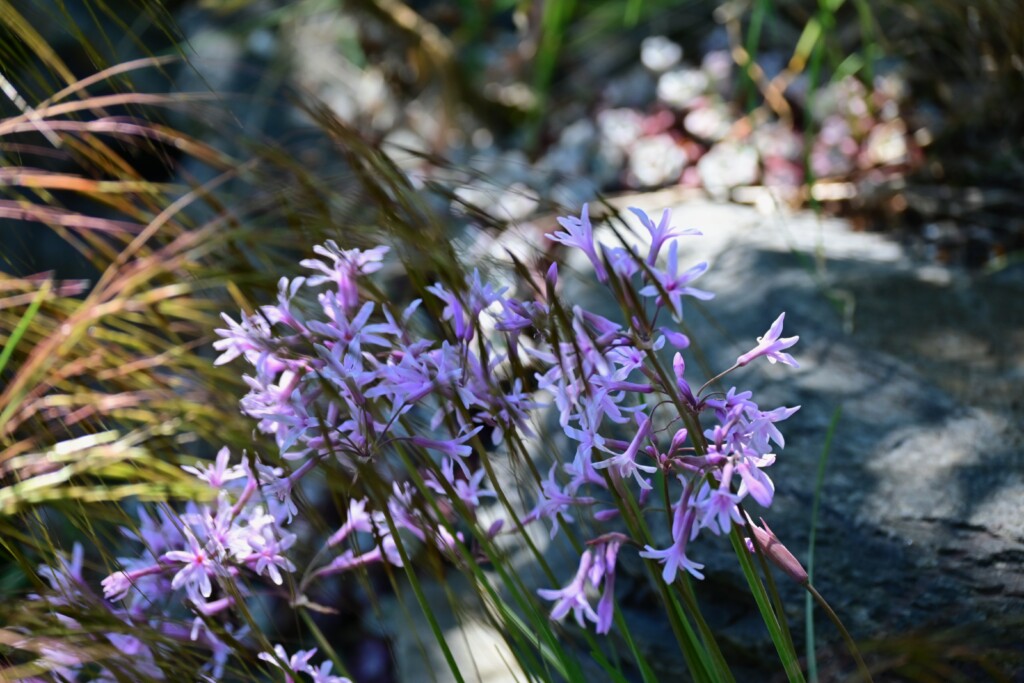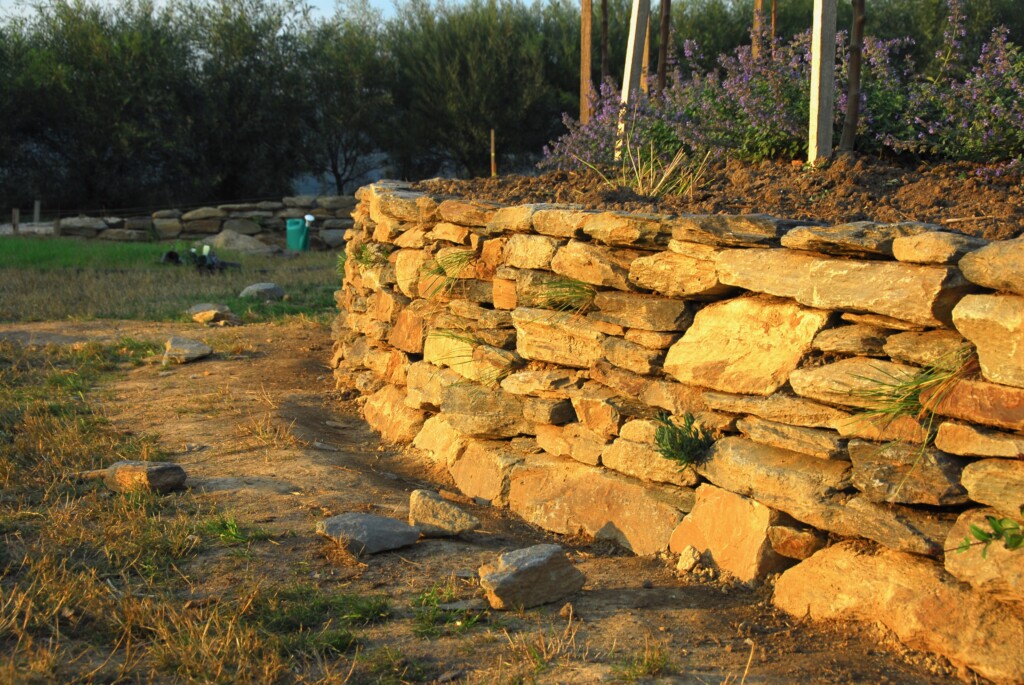I’m a rather reluctant fan of Tulbaghia ‘Fairy Star’. Why reluctant? Firstly, there’s that truly horrid, simpering name. Secondly, I rarely see ‘miniaturising’ of any plant as adding to its charms or garden usefulness, and Tulbaghia ‘Fairy Star’ is nothing more than a miniaturised form of the much larger, coarser, but incredibly tough and adaptable Tulbaghia violacea – society garlic (being a hybrid between the latter and Tulbaghia comminsii). But several years after it managed to slip into my garden, rather by accident, I’ve come to love and admire it.

I was given a couple of pots by PGA to trial, about eight or so years ago. I didn’t know what I was going to do with it. My perception was that it was just too small, at 20-30cm in flower, to have any context in my garden, which was otherwise full of tall and highly competitive perennials. It sat in pots for a year or two, bulking up nicely. I admit that, even then, I found the relative proportions of it quite captivating – the height and size of the flowers being a perfect match to the foliage, which is smaller, finer and neater than that of normal society garlic. It also seemed, at least at best, to be very generous in bloom – moreso than it’s larger cousin, which can be a bit mean on that score.

But then I found myself building a drystone wall, and, on the advice of old Aunt Bumps (as Sir Edwin Lutyens called Gertrude Jekyll, leaving you wondering what kind of relationship leads to that kind of nickname), wanted to plant stuff between the stones during construction. It’s a rare chance to get the root ball well in behind the stones, and works much better than any attempt at retrofit. I hadn’t, of course, thought ahead, so found myself scratching around amongst a collection of mostly neglected pot plants looking for things that might do. That’s when I spotted the Tulbaghia ‘Fairy Star’, which was by then substantially pot bound. I had to slice each root ball into four neat pie-pieces with a sharp knife to reduce their size to something tuckable, and then in they went, roots behind the stones, leaves sticking through the gap.

What I like best to remember is that at about this time a friend, whose opinion I hold in high regard, turned up and insisted that it just wasn’t right to use anything with strappy leaves as a wall plant. I’d had this very argument in my head while I was planting them, but had so come to the conclusion that they were a good idea that I openly mocked her waggling finger, and looked forward to proving her wrong.

In my chilly winters, Tulbaghia ‘Fairy Star’ is entirely deciduous. It’s also summer deciduous in all but the wettest of summers. This is hardly surprising, since it gets absolutely no water at all, and is planted into a west facing stone wall. It’s at its peak of bloom about now – in November – but if after our normally hot, dry summer we get a damp autumn, it will leaf up fully and flower again, as if it’s spring. This sink or swim/boom or bust cycle doesn’t seem to worry it in the slightest.
So I’ve come to love it. Even its rather washy pale mauve, which is somehow also in perfect keeping with its size and form. I’m guessing that with a little summer watering it would probably flower the whole summer through. But whatever you do, don’t plant it in large clumps or big swathes. One of our local roundabouts was planted entirely with Tulbaghia ‘Fairy Star’, which then turned into a boring solid block of pale mauve. This plant needs to be planted in such a way that you don’t lose contact with the separation of the flowers, so that it reads as spacious, light and bouyant, not just a carpet of colour.

So while virtually all my pleasure in Tulbaghia ‘Fairy Star’ can be explained in purely rational terms, an indeterminable extra shot of joy is injected into the mix by the fact that my friend has been proven profoundly wrong with each passing year, and that my gut reaction prevailed.
PS. praise be to gardening friends prepared to discuss and question what you’re up to in your garden. My garden is so much better for having such friends, and I hope you have several of them too.
I have just planted a few of these to see how they perform in my garden. Hopefully good now after reading your review. Can’t wait to see the flowers and see how they compare to the bigger variegated ones I already have. That’s what I love about gardening the anticipation of the bloom.
make sure you team them up with something. They’re pretty humble on their own!
I have used this dainty plant hard up against bluestone in a hot, exposed location. They have performed well with other perennials bringing flowers for an extended period of time. They work well alongside Sedum ‘Matrona’, white Iris and Cotyledon ‘Silver Waves’. Very low to maintain in Melbourne’s climate which is always a bonus.
Do you water them?
They are watered over summer only with a drip system with a good layer of mulch – they look awesome!